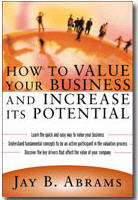All Articles
Accounting
Injury
Addiction Issues & Substance Abuse
Insurance Coverage Analysis
Animals
Intellectual Property
Archaeology - Archeology
Life Expectancy - Life Care Planning
Architecture
Logistics - Reverse Logistics
Branding - Brand Management
Manufacturing
Business Management
Medical Malpractice
Construction
Meditation
Corrosion
Metallurgy
Counseling
Mining
Crisis Management
Neuropsychology
Damages
Nonprofit Organizations
Design
Obstetrics - Gynecology (OBGYN)
Discovery & Electronic Discovery
Pain Management
Education & Schools
Pharmaceuticals
Elder Abuse
Pharmacy & Pharmacology
Electrical - Electrocution
Pools and Spas (Recreational)
Engineering
Premises Liability
Enterprise Resource Planning (ERP)
Psychology
Environment
Radiology
Exercise & Fitness
Security
Foot / Ankle Surgery
Sexual Abuse - Molestation - Harassment
Gems & Jewelry
Transportation
Healthcare
Underwriting
HVAC - Heating, Ventilation, Air Conditioning
Warnings & Labels
More...

PLANTS-TREES-PAGE ARTICLES MAIN PAGE
. Contact Us if you are interested in having your work published on our website and linked to your Profile(s).
All Articles
Accident Prevention & Safety
Forensic Analysis
Accounting
Forensic Psychiatry
Alcohol, Tobacco & Other Drugs
Healthcare Facilities - Hospitals
Anger Management & Related Issues
Hotels & Hospitality
Appraisal & Valuation
International Trade
Arms - Guns - Weapons
Internet Marketing
Artificial Intelligence (AI) / Machine Learning (ML)
Law Enforcement
Audio Forensics
Laws & Procedures
Banking
Logistics - Reverse Logistics
Chemical Industry
Medical Malpractice
Child Welfare
Meditation
Computers
Metallurgy
Construction
Obstetrics - Gynecology (OBGYN)
Crime Scene Investigation
Pharmaceuticals
Damages
Pharmacy & Pharmacology
Dental - Dentistry
Police Practices & Procedures
Digital Forensics
Psychiatry
Documentation Examination & Analysis
Public Speaking
Domestic Violence
Risk Management
Education & Schools
Securities
Enterprise Resource Planning (ERP)
Sexual Abuse - Molestation - Harassment
Family Issues
Speech-Language Pathology
Food & Beverage
Taxation
Foot / Ankle Surgery
Terrorism - Homeland Security
Foreign Affairs - Geopolitics
Warnings & Labels
More...
Featured Articles
There are no active articles here at this time. Please use the search bar, try another category, or contact us if you would like to contribute an article.
This Article is unavailable. Contact Us
Search articles by title, description, author etc.
Sort Featured Articles
Featured resources
How to Value Your Business and...
by Jay B. Abrams
Chromium(VI) Handbook
by James A. Jacobs, et. al (eds.)
Effective Medical Testifying : A...
by William T., PhD Tsushima, Kenneth K., Md. Nakano
Follow us










